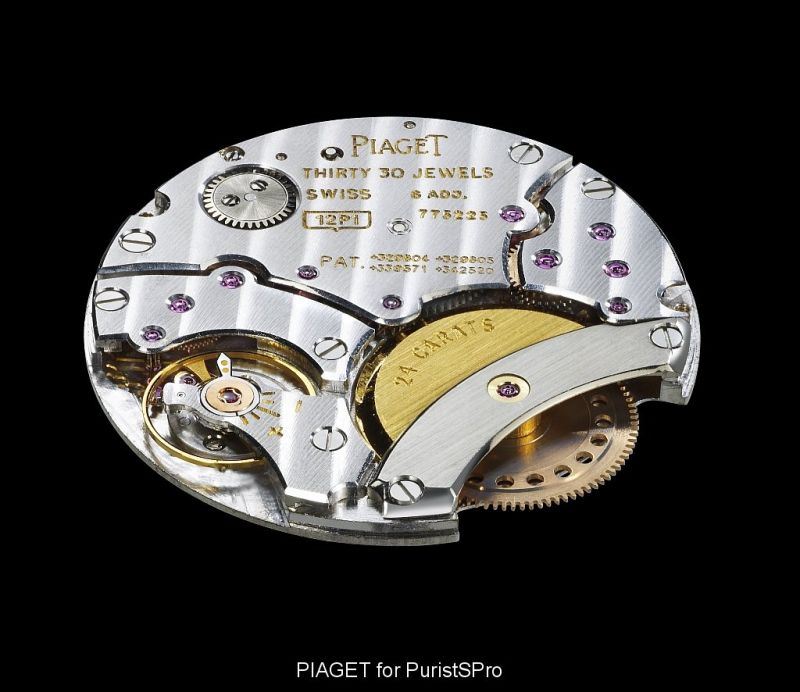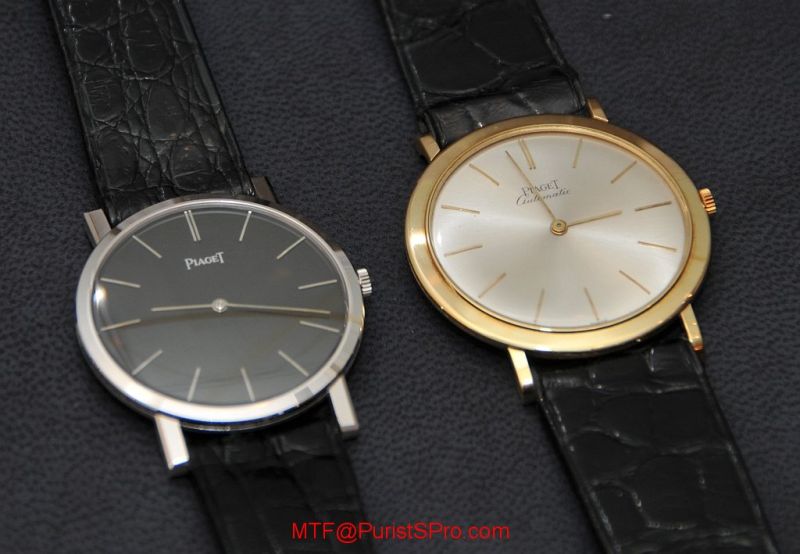
MTF
[PuristS]
13383

A thin legacy – PIAGET Calibre 12P and its Successor (Part 1)
A thin legacy – PIAGET Calibre 12P and its Successor (Part 1)
The last time we left the Altiplano story, I reviewed my personal 1957 Re-edition Enamel dial watch and a potted history of Piaget Ultra Thin watchmaking click here
For over half a century, the Manufacture de Haute Horlogerie Piaget re-wrote records and filled the finest pages in the history of ultra-thin movements. In 1957, Piaget caused a sensation by developing Calibre 9P, the world’s thinnest mechanical hand-wound movement (2 mm). Although production has ceased, there are still a few stock movements that occassionallly emerge in commemorative editions. In 1959, Valentin Piaget filed a patent for Calibre 12P (2.3 mm), which was marketed in 1960 and set a new record for ultra-flat self-winding watches.
I posted a few photos of the famed 12P and 9P movement that cemented Piaget's reputation as makers and purveyors of ultra-thin watches. Since then, Piaget fans have asked for photos of the original watches driven by those movements. I am pleased to oblige with some stock photos and also my own shots of the legendary Piaget Altiplano vintage models from 1957 and 1960.


12P

Altiplano manual 9P (1957) and automatic 12P (1960)
Within an 18-carat yellow gold case (photo right), the Manufacture Piaget 12P ultra-thin mechanical self-winding movement purred. The movement dimension of only 12 ’’’ ( 28.1 mm diameter) and 2.30 mm height had set the world record of its day for thin watches. The 19 jewels ensured a steadfast 19,800 vph beat and approximately 40-hour power reserve derived from the 24-carat yellow gold oscillating weight. Even in a closed case, the Piaget finishing was still impressive with: vertical Côtes de Genève, circular-grained plate, bevelled bridges, and that mesmerising gold rotor. Even Piaget admit that the design was driven by the thin form and functional reliability rather than aesthetics. The wide bridges helped to resist warping but it wasn't pretty. Then again, in Times Gone By, clients were more impressed by substance than 'flashy display backs'. The lubricants of the day were not resistant to UV light and it was boorish to be indiscrete with a 'see-through' case.
In any case (sic), Piaget focused on elegance and technical prowess to build their reputation at the pinnacle of the ultra-thin pyramid. Building on this historical legitimacy, the Manufacture de Haute Horlogerie Piaget continued to cultivate its rich know-how in the highly technical and rarefied atmosphere of ultra-thin movements. More recently, these include the 430P (2.1 mm thick) created in 1998 and the 830P (2.5 mm) launched in 2007. This expertise has also radiated to their complicated calibres such as the 600P, the world’s thinnest shaped tourbillon movement at 3.5 mm; the 880P, equipped with a flyback chronograph and a dual time-zone function at a mere 5.65 mm thick; and finally, the 855P that manages to accommodate a perpetual calendar, retrograde displays and a dual time-zone indication within just 5.6 mm.
Here are a selection of modern Altiplano watches in the 'Black Tie' Collection.






Still, there was a gap in the current line-up at PIAGET – they did not have THE thinnest automatic movement – until now.... ...
See Part 2 of 'A thin legacy – PIAGET Calibre 12P and its Successor (SIHH 2010)
Regards,
MTF
This message has been edited by MTF on 2010-01-15 05:24:48 This message has been edited by AnthonyTsai on 2010-01-15 09:48:27

A thin legacy – PIAGET Calibre 12P and its Successor (Part 1)
